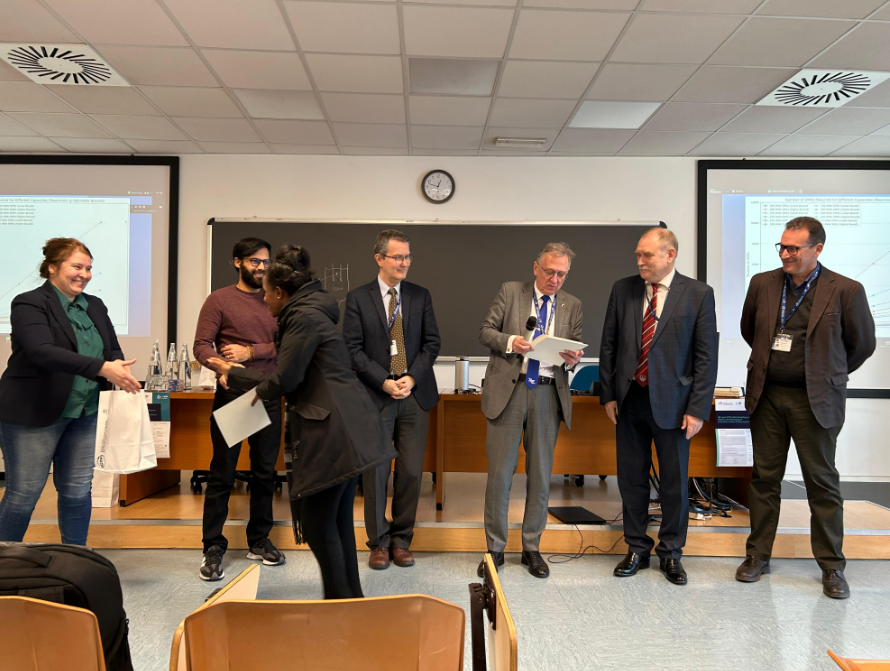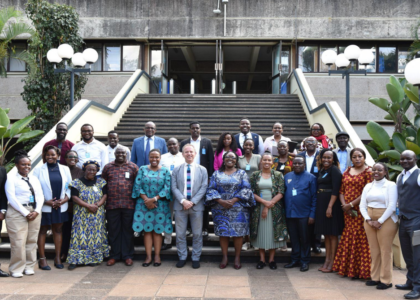Digital technologies are reshaping economies and, with them, the skills needed to succeed in the jobs of the future. Yet with women and girls persistently underrepresented in information and communication technology (ICT) education and careers, we can do more to break down the barriers that stand in their way.
Data from the World Bank Gender Data Portal show the proportion of female graduates in ICT is above 50 percent in countries such as The Gambia, Jordan, and Sint Maarten but as low as 9 percent in Cambodia and 10 percent in the Maldives and Switzerland.
Switzerland.
Emerging data from UN Women indicates that there has been good progress on ensuring women have equal digital skills, but we have a lot more work to do. For instance, in the Democratic Republic of the Congo, only 2 percent of females ages 15-49 can send an email with an attachment versus 7 percent of males. In Mexico, these figures stand at 31 percent and 35 percent, respectively; while in Oman, these skills are nearly universal. Key challenges include disparities in access to smartphones and computers; the lack of relevant content; and social norms that discourage women’s and girls’ use of the Internet, among others.
There are five key ways that we can support girls in becoming the ICT innovators the world needs:
1. Start early by addressing gender stereotypes in the classroom
The toys and books that we give young children matter—they play an important role in influencing their sense of self and aspirations. The Gender Model Readers Project in Zimbabwe found that showcasing biographies of women who have succeeded in male-dominated fields can help shift the career aspirations of girls. This suggests that we can start to dismantle gender bias by giving children access to learning materials that do not perpetuate gender stereotypes. By deliberately highlighting gender bias and working to shift how girls’ abilities are perceived, we hope to stop young girls from being discouraged early in their lives.
2. Empower girls to invent with hands-on training in technology
Connecting young girls with the opportunity to solve pressing local and global challenges through technology can inspire them to be digital creators. Extracurricular programs, like Technovation, are especially promising. There are already examples of Technovation girls harnessing ICT to solve real-world problems. In Nigeria, a group of teenage girls developed an app that spots counterfeit drugs, while a group of Indian girls developed an app to facilitate responsible disposal of e-waste. Digital skills are indisputably life-changing for those who learn them and for their communities, who benefit from new technological solutions.
3. Create connections with female mentors and women role models to encourage girls to pursue STEM studies
Alongside ensuring girls’ hands-on exposure to technology, female mentorship, and role models can help build girls’ confidence and persistence in ICT and STEM (Science, Technology, Engineering, and Math subjects) more broadly. A recent study from IFC found that on the e-learning platform Coursera, women’s enrollment in STEM reaches near parity when at least one female instructor is present compared to only 35 percent with all male instructors. The right support for female students can go a long way. For example, in Lebanon, matching a female student with a female science mentor rather than a male mentor in the first year of college substantially reduced the gender gap in STEM enrollments and graduation.
4. Provide career information to encourage young women to take ICT and STEM jobs
Emerging evidence suggests that schools and skills training programs can provide information about the financial returns of higher-paying careers, which can in turn, encourage women to work in these fields. In Kenya, young women who received information about the potential for earning higher wages in male-dominated occupations were more likely to enroll in programs for male-dominated trades; this also led to an increase in their hourly wage earnings.
5. Ensure inclusive workplace policies and keep women in ICT and STEM careers
Workplace policies that support retention are also critical. There is a wide range of options to create inclusive and more equitable workplaces, which are relevant not only to STEM jobs. This includes well-known areas such as parental leave policies, flexible work, employer-supported childcare, and anti-sexual harassment policies, to name a few. Women in STEM, particularly, report sexual harassment as a problem in their industry at higher rates than women in non-STEM jobs. Sri Lankan automotive conglomerate DIMO addressed the issues as part of IFC’s Respectful Workplaces Program and succeeded in increasing women’s share in male-dominated jobs by 15 percent.
Transforming lives through ICT and STEM
Building on available evidence and good practices, the World Bank Group is supporting girls and young women all over the world to gain the necessary digital skills, enter ICT and STEM careers, and improve workplace conditions to ensure they can thrive in the digital economy.
Innovative digital skills programs in Nepal will cover the cost of training for young women, mobilize mentor networks to support retention, provide safe transportation, and engage with potential employers to support the transition to the workforce.
A digital jobs pilot in Sierra Leone will provide childcare options and will continue to support young women after their training is complete through linking with female mentors and networking events.
In Bangladesh, we are training 24,000 female students in public universities on emerging technologies, as well as incentivizing companies and universities to have at least 30 percent women in their technology training programs.
ICT is the key that girls and young women will use to change the world, and we can’t wait to see what they unlock. That’s why we are joining the ITU in its call to support girls to become not only users but creators of digital solutions. We call on our partners to work with us as we strive to make ICT careers accessible, to inspire girls to study ICT and STEM subjects and to empower them as digital innovators.
Jannat Binte Alam, a trainee from Bangladesh, says it best “I took part in the Java Course with great interest… now I’m working very successfully. I appeal to the government to organize such training more. Then my friends and many other young people of the country can enrich themselves like me. So, they will be able to march forward along with the country’s IT sector and economy.”
The authors would like to thank the following colleagues for their contributions: Tijan Bah, Sarah Bunker, Abigail Goodnow Dalton, Sarah Danman, Jaylan Elshazly, Camila Mejia Giraldo, Alicia Hammond, and Suparna Roy.







